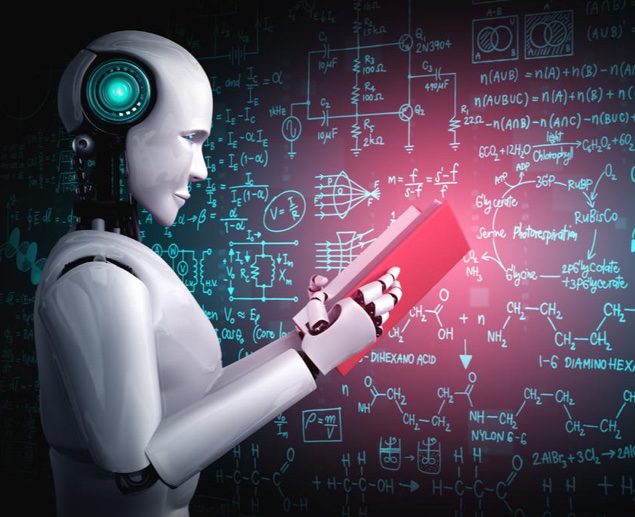
Introduction
What is Artificial Intelligence? The quick answer varies depending on who you ask.
A layperson with only a rudimentary grasp of technology would immediately associate it with robots. They assume Artificial Intelligence as a Terminator-like figure capable of acting and thinking independently.
If you inquire an AI expert what artificial intelligence is, they will tell you that it is a learning algorithm that can create outcomes without being expressly instructed. They’d all be correct, by the way. To summarize:
- An intelligent entity created by humans
- Capable of intelligently doing things without being explicitly directed.
- Capable of sensible and humanitarian thought and action.
Components of artificial intelligence
Artificial intelligence, as a concept, may be simple to grasp and discuss. However, when examined as a concept, AI might be intimidating, especially if you’re just getting started. Let’s look deeper at the five essential components that make AI a reality to understand better how it works.
Machine learning
Machine learning or ML is an artificial intelligence application that allows computers to learn and improve from their experiences without being specifically programmed to do so.
You can analyze data, identify patterns, and make predictions using machine learning algorithms. These programs are meant to improve over time by learning from and adapting to changing datasets.
Deep learning
Deep learning or DL is a subfield of machine learning, and it makes use of artificial neural networks to allow robots to learn through data processing. Even if the information supplied is unorganized and varied, deep learning enables machines to tackle challenging issues.
The learning process is carried out here by modifying system operations in response to a continuous feedback loop.
Artificial neural networks
An artificial neural network (ANN) is a type of artificial intelligence that is supposed to mimic how the human brain analyses and processes data. ANN provides AI with self-learning abilities and may also be deemed the technology’s core.
Artificial neural networks (ANNs) are designed to look like organic neural networks in the brain.
Natural language processing (NLP)
Natural Language Processing or NLP is an area of artificial intelligence that allows computers to read, comprehend, and generate human language. The vast majority of voice assistants use NLP.
NLP is a method of converting unstructured linguistic input into a format that computers can understand.
Computer vision
Computer vision or CV is a branch of computer science aimed at stimulating the human visual system for machines to “see” and comprehend the information of pictures and videos.
Machines using computer vision can recognize and categorize things using picture recognition. CV is a crucial component in the development of self-driving automobiles.
How does AI work?
Artificial intelligence functions similarly to the human brain, and it’s not through chance because AI is all about simulating human intellect. Although all of the components outlined in the preceding section play a role in AI’s efficacy, machine learning goes much farther. AI may use machine learning to evaluate and comprehend data and adapt to new situations.
AI can also filter through billions of photographs and categorize them according to your needs. For example, you can educate an AI to recognize if an image is of a cat or a dog. You’d do this by giving the computer information about both animals’ characteristics, such as:
- Cats have longer tails than dogs.
- Cats often have visible whiskers, but dogs do not.
- Claws on cats are exceedingly sharp and retractable, while those on dogs are duller.
AI uses artificial neural networks to examine all of this data. It becomes better at detecting the intended object as it examines more photographs.
Not every activity that an AI computer does has to be difficult. You may create something as basic as an AI coffee maker that will brew you a cup of coffee anytime you want it. However, such a coffee machine can learn the precise amount of cream and sugar you want in your coffee at any specific time. You can learn more about this and take on more complex concepts by signing up for Great Learning AI classes.
Types of AI:
Artificial intelligence is divided into three groups based on its ability to imitate human intellect. They may be divided into three categories: weak, strong, and super.
Artificial Narrow Intelligence (ANI)
The most basic and constrained AI is artificial narrow intelligence (ANI), often known as weak AI.
However, don’t be fooled by the word “weak.” Despite being described as narrow and weak, this sort of machine intelligence can execute the task it was built to achieve.
Narrow AI excels at doing repetitive jobs. For this type of AI, speech recognition, object identification, and facial recognition are just child’s play. On the other hand, this AI operates under specific boundaries and constraints, making it weak.
Artificial General Intelligence (AGI)
Artificial general intelligence (AGI) refers to an AI agent’s ability to learn, observe, understand, and function similarly to a human. In principle, AGI also referred to as strong AI, can do whatever a person can.
Strong AI, unlike ANI, is not constrained by any specific set of limits or restrictions, and it can learn, improve, and execute a wide range of jobs. Because this sort of artificial intelligence can think, comprehend, and behave like humans, it will possess the whole range of cognitive capacities that humans enjoy.
Artificial Super Intelligence (ASI)
“Artificial superintelligence” (ASI) refers to a hypothetical AI. Super AI refers to when robots outperform humans in intellect and cognitive ability.
Once ASI is unlocked, machines will have enhanced predictive ability and will be capable of thinking in ways that humans will find impossible to fathom. ASI-enabled machines will outperform humanity in every way.
Our decision-making and problem-solving talents would pale in the face of a super AI. Many industry professionals remain doubtful about the viability of establishing ASI.
Career Trends in Artificial Intelligence
AI jobs have been gradually expanding in recent years and will continue to develop rapidly in the future. The incomes of applicants who successfully migrated into AI professions have increased by 60-70 percent. According to studies, the demand for AI jobs has surged, but the efficient labor has not kept up. So, it’s the best time to enroll in an AI course to grasp this field with bright prospects.
Future of Artificial Intelligence
We have often been captivated by scientific breakthroughs and fantasies as humans, and we are currently living in the middle of the biggest breakthroughs in the history of humankind. Artificial Intelligence has now risen to prominence as the next big thing in technology, and artificial intelligence and machine learning breakthroughs are being developed by organisations worldwide.
Artificial intelligence influences the future of every sector and every human being and drives new technologies such as robots. It will continue to be a technology with great potential based on its current growth rate. Therefore, learning artificial intelligence from Great Learning will be extremely beneficial to your career because professionals with certain skills and qualifications have a variety of possibilities for pursuing a successful career. These technologies will also influence social settings and overall quality of life as they advance.
